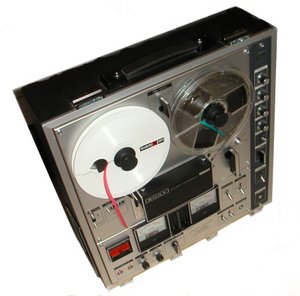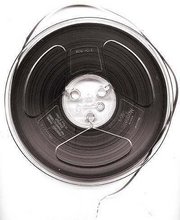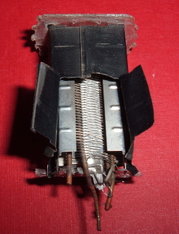Other Brands
The compact audio cassette medium for audio storage was introduced by Philips in 1963 under the name Compact Cassette. more...
Although there were other magnetic tape cartridge systems at the time, the Compact Cassette became dominant as a result of Philips' decision (in the face of pressure from Sony) to license the format free of charge. It went on to become a popular (and re-recordable) alternative to the vinyl record deck during the 1970s. During the 1980s, its popularity grew further as a result of the Sony Walkman.
Although its use in the West has declined as a result of more advanced technologies, it remains widespread, and is still the dominant medium for listening to music in many third world countries.
In essence, the audio cassette is simply a cassette-based (and smaller) version of the older reel-to-reel tape format. It consists of two miniature reels, between which an oxide-coated plastic tape, or magnetic tape, is passed and wound. These reels (along with some other mechanical parts) are held inside a protective plastic shell.
Four single audio tracks are available on the tape. These are paired to produce two stereophonic tracks – one played when the cassette is inserted with its 'A' side facing up, and the other when it is turned over (with the 'B' side up), thus mimicking gramophone records.
The mass production of compact audio cassettes began in 1965 in Hanover, Germany, as did commercial sales of prerecorded music cassettes, known as musicassettes or MC for short. The system had been initially designed for dictation and portable use, thus the audio quality of early recorders was not well suited for music. Some early models also had unreliable mechanical design. As time went on, various improvements (in particular, the introduction of Dolby noise reduction) resulted in the format being taken seriously for musical use.
Features of the cassette
The cassette was a great step forward in convenience from reel-to-reel audio tape recording, though because of the limitations of the cassette's size and speed, it initially compared poorly in quality. Unlike the open reel format, the two stereo tracks lie adjacent to each other rather than a 1/3 and 2/4 arrangement. This permitted monaural cassette players to play stereo recordings "summed" as mono tracks and permitted stereo players to play mono recordings through both speakers. The tape is 3.18 mm wide (nominally 1⁄8 inch), with each stereo track being 0.79 mm wide (1⁄32 inch) and moves at 4.76 cm/s (17⁄8 inches/sec) from left to right. For comparison, the typical open reel format in consumer use was ¼ inch (6.35 mm) wide, each stereo track being 1⁄16 inch (1.59 mm) wide, and running at either 3¾ or 7½ inches/sec (9.5 or 19 cm/s).
Read more at Wikipedia.org



